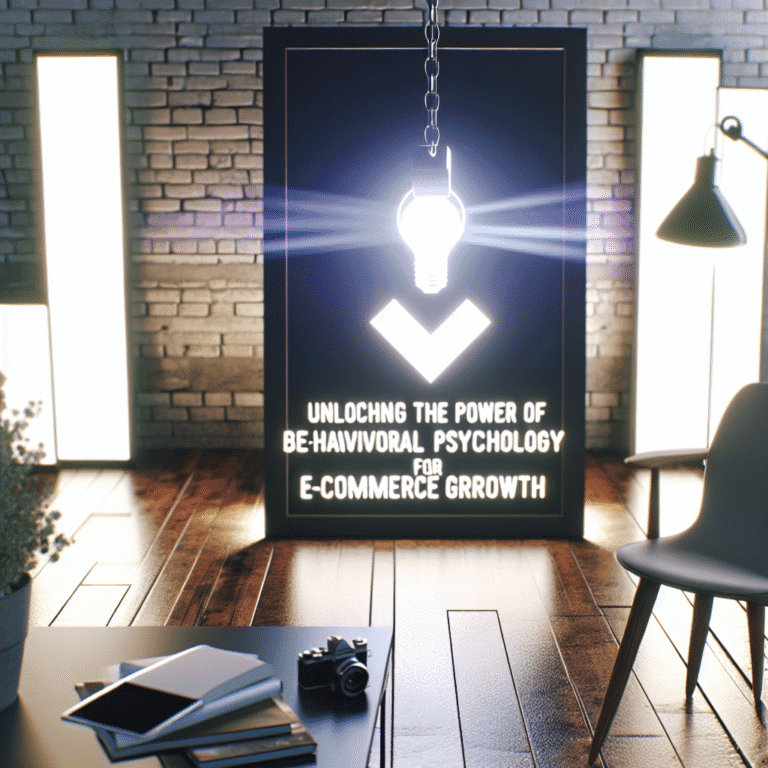Learn How to Keep Carts Ticking Over
Haven’t you noticed? You’ve streamlined your website so it loads lightning-fast, and your product photos could win awards. Your copy is more Hemingway than your old school essays, and yet, customers seem to be leaving their shopping carts stranded in the search for a better offer. It’s heartbreaking, isn't it? It’s time to think about what's really stopping folks from following through.
Now, shopping online isn’t just maths; it’s more like an episode of a drama series. People don’t always make the logical choice because, frankly, they’re more like a cat chasing a laser pointer than an accountant with a calculator. They’d rather feel good than make a carefully considered decision amidst an orchestra of distractions.
This isn’t just another list of random tips though. It’s a playbook that dives deep into the human psyche — showing you how savvy brands manage to reduce cart abandonment by understanding why people shop the way they do.
The Psychology of Ecommerce
Think behavioural psychology is just mumbo jumbo? Think again. It’s like the Sherlock Holmes of shopping habits — meticulously observing how folks make odd buying choices. It’s not about efficiency; it’s about crafting an online experience that nudges shoppers in the right direction when they’re most likely to hesitate.
When done right, it can help:
- Nudge people past their hesitations and keep those carts from rusting
- Boost order totals by showing choices in a different light
- Create urgency that feels genuine
- Make decision-making painless in clunky customer journeys
It's like theatre — but for shopping. Shall we dive into the action?
Biases That Mess With Your Sales
We all like to think we're savvy shoppers, but in reality, we’ve got our quirks, and they’re pretty predictable once you know them. Here are a few mind tricks that trip up your sales:
- Loss aversion: Losing stings more than winning thrills
- Social proof: People follow the herd
- Anchoring: The first number seen sets the scene
- Choice overload: Too many options can fry the brain
- Endowment effect: We love what we feel is ours
Research even shows too many similar options can send shoppers running. The trick is, fewer but better options mean more coins in your coffers. Now, let’s steer those carts back on track with some clever tactics.
Ten Ways to Stop Cart Abandonment in Its Tracks
These aren’t just nudges; they’re full-on shoves. Each tactic uses a psychological principle to turn hesitation into checkout.
1. Create Urgency That’s More Carrot Than Stick
We all hate fake “only 3 left!” warnings, don’t we? Instead, try making urgency feel real, like a useful heads-up.
- “Only 2 left for size M”
- Countdown timers for shipping cutoffs
- “Order within 4 hours for Friday delivery”
The trick is to make it about timing, not panic-inducing scarcity.
2. Lead With the High-End Option
People anchor their perception on the first price they see. Showcase the fancy version first; it’ll make the cheaper ones seem like bargains.
- Start price lists with the priciest option
- “Compare plans” to highlight value, not just price
- Cross out the old price for discount clarity
Let the expensive choice make the others look irresistible.
3. Curate Choice, Don’t Complicate It
Don’t send customers packing by showing ‘em every option under the sun.
- Use “Top Pick” or “Most Popular” labels
- Load the less popular options later
- Sort products by customer profiles, not SKU overload
Just like a good cup of tea, less is often more.
4. Use Social Proof Where It Counts
Reviews are great, but scatter them in the right spots, like when shoppers are hesitating.
- Add review snippets near size or colour options
- Show customer photos in their purchase
- Suggest “Often bought with” items
Get this right, and social proof doesn’t just validate — it accelerates.
5. Get a Yes Before the Going Gets Tough
People like to feel they’re making progress. Get them committed before the nitty-gritty.
- Let people add to carts sans login
- Save details early in the process
- Frame opt-ins nicely (“Shall we keep these safe for you?”)
Get them in the cart before the real hard sell.
6. Use Design to Highlight Intent
Not all calls to action are equal. Let your design guide the wandering eye.
- Colour-coded tags for trust
- Faded options to keep focus where it’s needed
- Contrast and whitespace to make CTAs pop
It’s visuals with purpose, and purpose is what people buy.
7. Give Something Before Asking
Reciprocity is our old friend. Offer value upfront to oil the wheels of purchase.
- Quality fit guides à la ASOS
- Friendly return policies (“We’ll make it right, no fuss”)
- Delightful service, like speedy packing promises
A small bit of value upfront can mean a smoother checkout process.
8. Make Shipping Feel Part of the Deal
Nobody likes a hidden fiver in shipping fees. Wrap it nicely into the price.
- Progress bars to free shipping goals
- Frame fees as benefits (e.g., “Tracked delivery for peace of mind”)
- Show positive impacts like carbon offsetting
Get shipping right, and watch people complete instead of quit.
9. Use Abandonment as a Nudge
When customers leave their carts in the alleyway, gently remind them of what they’re about to miss out on.
- “Your items are waiting, but not for long”
- “Size M in Olive is nearly gone”
- “15% off ends at midnight — don’t snooze”
An open loop begs to be closed. Help them close it.
10. Test for Emotional Impact, Not Just Cosmetic Changes
Most testing zeros in on pixels, but emotion sways people more than pixels ever will.
- Empathy-rich copy vs technical jargon
- Memorable names, not forgettable ones
- Stories over stats in case studies
Even Headspace found success not with an award list, but by promising less anxiety in three minutes.
Wrapping Up: Cart Flow in Simple Terms
What seems like cart abandonment is often just a little hesitation. Make them feel good about the checkout and, voilà, the carts roll out. Play to the heart, not just the head, and tack on some genuine human warmth.
Think of it as a curtain call. Make them feel right, and they’ll be back for an encore. And if you want to think like a guru with a heart for eCommerce, try reading “Influence” by Robert Cialdini or “Thinking, Fast and Slow” by Daniel Kahneman. Then take another look at your checkout page, not as someone hunting numbers, but as someone hunting smiles. Even one tiny tweak can mean carts get abandoned less and bought more.
Start small, think big and above all — keep it human.





